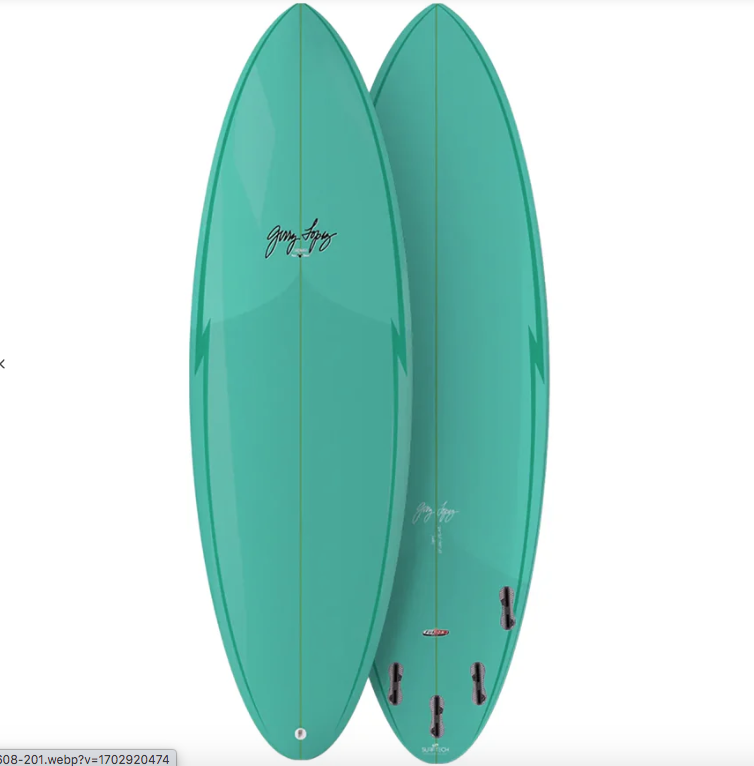GERRY LOPEZ SQUIRTY – TRUERIDE PU – FCS II – 5 FIN ( 6’8 x 20.5” x 2.8” 41.9 ltr ) Teal
€909.00
Find your balance with the Squirty. By harnessing the Yin and Yang of surfboard design, Gerry has created a board that truly does it all.
The Squirty’s extra width and volume near the nose of the board will help surfers catch more waves. While a pulled-in tail and curvacious back half will allow the board to rip hard. A Low entry rocker with a slightly rolled bottom going into a single concave and finishing in a double concave with a user-friendly tail lift, makes the Squirty loose and fast.
The Squirty has everything a surfer could want in one board, making it the perfect daily driver.
Trueride PU
TRUERIDE boards consist of a PolyUrethane Core, PolyEster Resin, and model-specific fiberglass layups specked to achieve the right balance between weight and durability. Surftech’s TRUERIDE construction is our most traditional surfboard build, providing users with a dependable and predictable surfing experience.
- POLYURETHANE CORE // High-density polyurethane core for performance and feel
- POLYESTER RESIN // Advanced polyester resin for strength and flex
- 6OZ FIBERGLASS W/4OZ FULL PATCH // High strength-to-weight ratio, balanced for performance and durability
- WOOD-PLY STRINGER // Wood fibers create a natural flex and add break-strength
- FCS II FIN BOXES // Takes just seconds to insert and remove the fins
- AIRBRUSHED RAIL AND BOTTOM + PIN LINES //Long-lasting color keeps your board looking new longer
- SANDED FINISH // The fasted finish, optimized for high-speed surfing
Fins included: None
MR Pipeline
“WAVES KEEP COMING, THAT’S THE ONE THING YOU CAN COUNT ON IN LIFE”
Gerry Lopez grew up in the extraordinary place that was Hawaii in the 1950s and 1960s. He played a part in the shortboard revolution of the late 1960s and early 1970s. He experienced the awe, fear, and ultimate satisfaction of finding the tube in the early days at the Pipeline. He traveled for surf throughout the world: to the original surf camp at G-Land, the exotic islands off Sumatra, and especially to the magic island of Bali, Indonesia – before it became a popular surf destination. He experienced the beginnings of windsurfing on Maui, the early years of snowboarding and tow-in surfing at Jaws. Fast forward to today and Gerry Lopez is shaping some truly unique boards that keep his surfing journey moving forward. This collection of boards represents the quiver that he takes around the world to surf the ultimate breaks.
In stock
Brand
Gerry Lopez Surfboards
Mr. Pipeline
Gerry Lopez grew up in the extraordinary place that was Hawaii in the 1950s and 1960s. He played a part in the shortboard revolution of the late 1960s and early 1970s. He experienced the awe, fear, and ultimate satisfaction of finding the tube in the early days at the Pipeline. He traveled for surf throughout the world: to the original surf camp at G-Land, the exotic islands off Sumatra, and especially to the magic island of Bali, Indonesia - before it became a popular surf destination. He experienced the beginnings of windsurfing on Maui, the early years of snowboarding and tow-in surfing at Jaws.Fast forward to today and Gerry Lopez is shaping some truly unique boards that keeps his surfing journey moving forward. This collection of boards represents the quiver that he takes around the world to surf the ultimate breaks.



